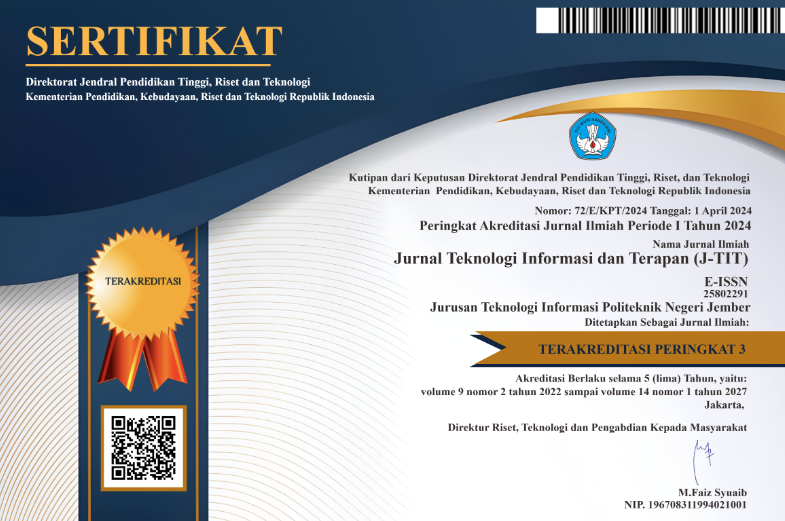Utilizing Data Mining Approach For Hypertension Diagnosis Classification
Abstract
Hypertension is one of the factors contributing to the highest death rates from non-communicable diseases in various countries. Every year, the number of hypertension sufferers increases significantly. It is estimated that in 2025, the number of hypertension sufferers will reach 1.5 billion individuals. Data mining aims to identify patterns that can help in decision making, classification, and prediction. One of the well-known algorithms or methods for classification is the Support Vector Machine (SVM). The SVM method aims to find the best hyperplane or decision boundary function that can separate two or more classes of data in the input space. This research purpose is to determine the classification results and accuracy of the diagnosis of hypertension using the SVM method. Eleven attributes used include age, smoking habits, physical activity, sugar consumption, salt consumption, fat consumption, alcohol consumption, lack of fruit and vegetable consumption, systolic and diastolic blood pressure. This research will utilize Jupyter Notebook tools and Python programming language as research tools. The SVM method was trained with various kernel attributes and hyperparameters to produce the best model. From the results it is known that the RBF kernel used with parameters ???? = 100 and ???? = 0.1 produces an accuracy of 97.5% which is the best model in classifying hypertension. From these results it can be concluded that the SVM method is able to produce a very good classification of hypertension diagnosis and can provide a diagnosis to detect hypertension early
The Authors submitting a manuscript do so on the understanding that if accepted for publication, copyright of the article shall be assigned to Jurnal Teknologi Informasi dan Terapan (J-TIT) and Department of Information Technology, Politeknik Negeri Jember as publisher of the journal. Copyright encompasses rights to reproduce and deliver the article in all form and media, including reprints, photographs, microfilms, and any other similar reproductions, as well as translations. Authors should sign a copyright transfer agreement when they have approved the final proofs sent by Jurnal Teknologi Informasi dan Terapan (J-TIT) prior to the publication. The copyright transfer agreement can be download here .
Jurnal Teknologi Informasi dan Terapan (J-TIT) and Department of Information Technology, Politeknik Negeri Jember and the Editors make every effort to ensure that no wrong or misleading data, opinions or statements be published in the journal. In any way, the contents of the articles and advertisements published in Jurnal Teknologi Informasi dan Terapan (J-TIT) are the sole responsibility of their respective authors and advertisers.
Users of this website will be licensed to use materials from this website following the Creative Commons Attribution 4.0 International License. No fees charged. Please use the materials accordingly.

This work is licensed under a Creative Commons Attribution-Share A like 4.0 International License
You are free to:
- Share — copy and redistribute the material in any medium or format
- Adapt — remix, transform, and build upon the material for any purpose, even commercially.
- The licensor cannot revoke these freedoms as long as you follow the license terms.









